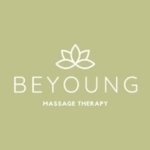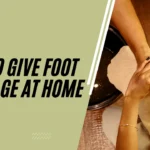Jaw tightness is common—especially if you clench, grind, or sit forward at a screen. This short routine relaxes the main jaw muscles (masseter and temporalis) and can ease everyday tension.
Before you start
- Sit tall with relaxed shoulders.
- Wash hands; trim nails if needed.
- Optional: apply a tiny bit of face oil or lotion.
- Warm the area with a warm towel for 30–60 seconds.
- If you’d rather unwind first, a calming Swedish Massage in Tysons Corner can help you release overall stress before self-massage.
Step-by-step jaw massage (4–8 minutes total)
1) Masseter (cheek area)
- Gently clench to feel the bulge between cheekbone and jaw—then relax.
- With 2–3 fingertips, make slow circles over that muscle for 30–60 seconds per side.
- Glide your fingers from the corner of your mouth toward your ear 3–4 times.
- If you find a tender spot, hold gentle pressure for 10–20 seconds while breathing slowly.
2) TMJ hinge (in front of the ear)
- Place two fingertips just in front of the ear canal.
- Make tiny circles for 20–30 seconds per side.
- Slowly open and close your mouth within a comfortable range as you do this.
3) Temporalis (side of head)
- Place fingers above the ear on the fan-shaped muscle.
- Make light, slow circles for ~30–45 seconds per side. Avoid pressing near the eye.
4) Jawline sweep (for comfort & drainage)
- Using your knuckles or thumbs, sweep from the chin along the lower jaw toward the ear.
- Light to moderate pressure, 3–5 slow passes per side.
5) Gentle mobility
- Finish with slow mouth opening/closing and side-to-side movements (10–15 seconds).
- Movements should feel easy—stop if you feel sharp pain or locking.
How often?
- During flare-ups: 1–2 times daily.
- For maintenance: 3–4 times per week.
What it should feel like
- “Good pressure” that gradually eases.
- It should not feel sharp, burning, or produce lingering pain. If it does, reduce pressure or stop.
Extra help (if tension runs into neck & shoulders)
If your jaw tightness comes with stubborn neck/shoulder knots, a focused Deep Tissue Massage in Tysons Corner can release trigger points that keep pulling on the jaw. For flexibility and stretch-based relief, many guests prefer Thai Massage to open up the chest, neck, and hips—often easing clenching habits indirectly. You can also compare options on our Services page.
Quick do’s & don’ts
Do: breathe slowly, sit tall, go slowly, treat both sides.
Don’t: press so hard you bruise, rush through tender spots, or work directly into painful joint clicks.
When to get help
See a dentist, physical therapist, or TMJ-trained massage therapist if you have jaw locking/catching, severe or persistent pain, very limited opening, or symptoms that don’t improve after a couple of weeks.
General self-care guidance only; not a medical diagnosis. If you’re unsure, consult a professional.






